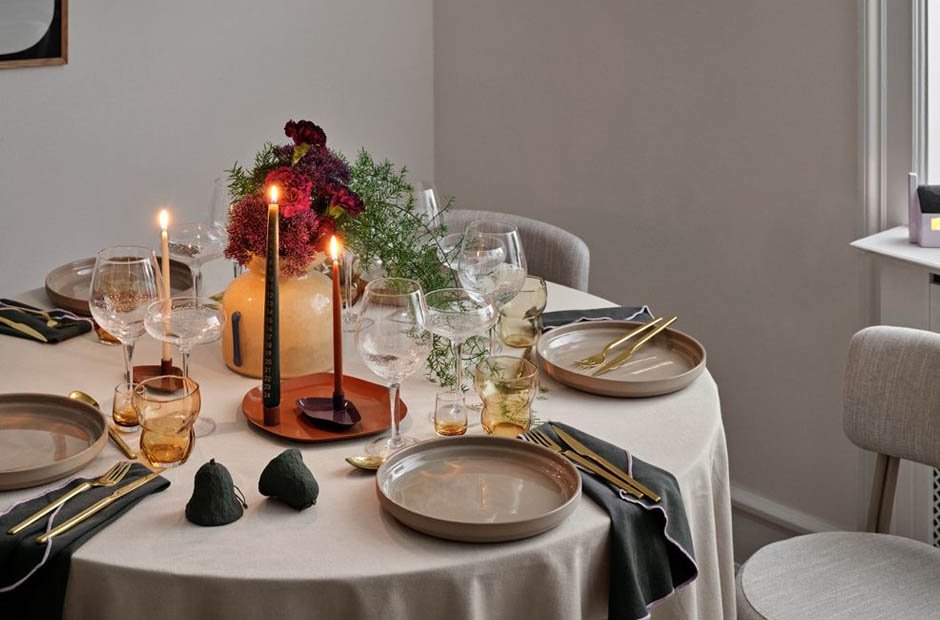Designing a centerpiece for your dining table can seem simple, but you must follow some rules to ensure it looks polished and intentional. A well-crafted centerpiece can set the tone for the room, enhance the dining experience, and reflect your personal style. Whether you’re working with flowers, candles, or unique decorative elements, a few design principles can make all the difference. It’s not just about what you place on the table—it’s about how the pieces work together to create harmony and balance. These guidelines ensure your centerpiece is eye-catching without overwhelming the space. Let’s dive into five essential design rules you should always follow when creating a beautiful, functional centerpiece.
Table of Contents
Consider Proportions
One of the most important rules when designing a centerpiece is to consider the proportions of the items you’re using in relation to the table and the surrounding space. Your centerpiece should enhance the table, not dominate it. A piece that’s too large can block conversations or make the space feel cluttered, while something too small may go unnoticed. You should keep it low enough to maintain eye contact across the table. Aim for balance in size so that every centerpiece component works together cohesively. Remember that simplicity often speaks louder than a complex arrangement when in doubt.
Stick to a Color Scheme
A consistent color scheme is key to creating a cohesive and visually appealing centerpiece. Mixing too many unrelated colors can make the arrangement look chaotic and disjointed. Choose a palette that complements the room’s decor, whether neutral tones for elegance or bold colors for a pop of excitement. You can play with different shades of the same color to add depth without overwhelming the space. For example, a soft orchid centerpiece in varying shades of purple can create a sense of calm while making a sophisticated statement. Sticking to a clear color scheme ensures your centerpiece feels intentional and well-thought-out.
Vary Heights and Textures
A good centerpiece plays with different heights and textures to create visual interest. Incorporating elements at various levels keeps the arrangement dynamic and prevents it from feeling flat or one-dimensional. You might combine tall candlesticks with lower floral arrangements or mix smooth glass vases with rougher materials like wood or woven baskets. This contrast in height and textures draws the eye and keeps your centerpiece engaging without feeling overcomplicated. However, it’s essential to ensure that the elements complement each other and don’t clash. The key is balance—each piece should have its place without overpowering the others.
Focus on Functionality
While aesthetics are important, your centerpiece also needs to be functional. It should not interfere with serving dishes or restrict the view of your guests. Keep the design practical by ensuring enough space on the table for plates, glasses, and utensils. If you’re hosting a meal, avoid overly scented candles or flowers, as they can compete with the aromas of the food. Functionality also extends to maintenance. Opt for easy-to-clean and manage elements, especially if you plan to keep the centerpiece up for an extended period. This way, your design looks good and fits seamlessly into everyday life.
Layer in Personal Touches
A great centerpiece should reflect the space it inhabits and the people’s personality. Don’t be afraid to incorporate personal touches like heirlooms, family photos, or travel objects. These elements can add a unique, meaningful twist to your centerpiece, making it feel more than just decorative. Personal touches create a story, making your design feel special and intentional. Just ensure these items harmonize with your centerpiece’s overall theme and design. The right blend of personal elements ensures that your centerpiece truly reflects your style and story.
Conclusion
Following these design rules will help you create a beautiful and functional centerpiece. Your centerpiece will elevate the space without feeling overdone by considering proportions, sticking to a color scheme, varying heights and textures, and focusing on functionality. Adding personal touches helps make the arrangement uniquely yours, giving it depth and meaning. Remember, your centerpiece should complement the space and enhance the experience, whether for everyday dining or a special occasion. By adhering to these design principles, you’ll be able to craft a centerpiece that strikes the perfect balance between style and practicality. With these tips in mind, your next centerpiece will surely become a stunning focal point in your home.










